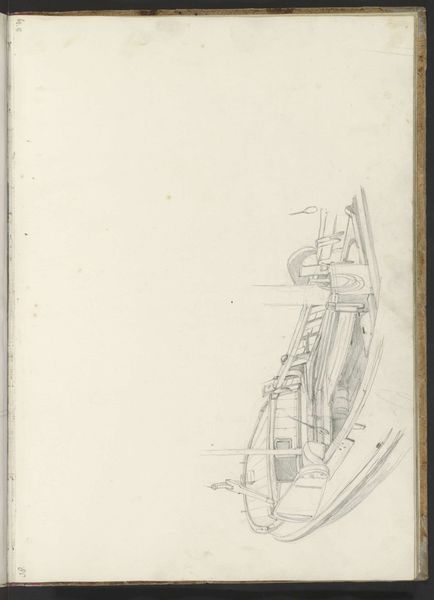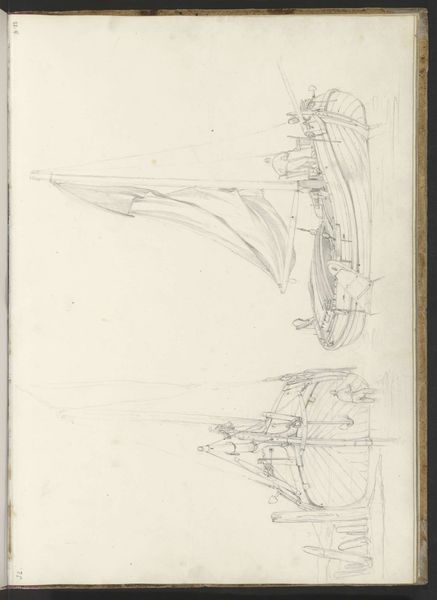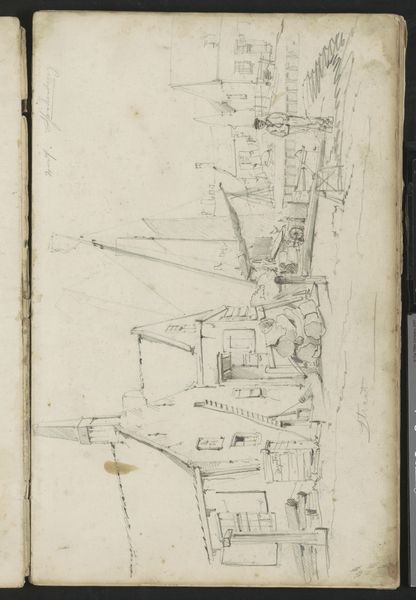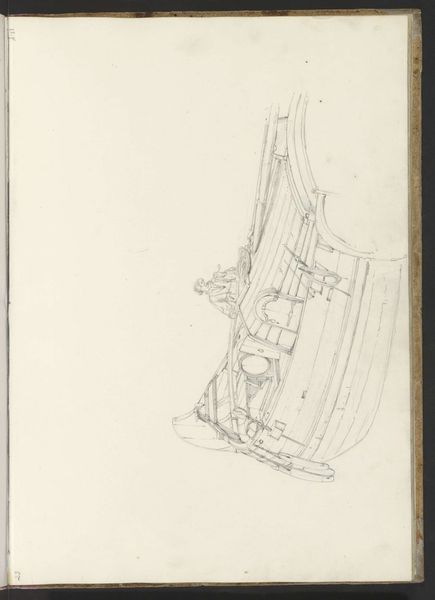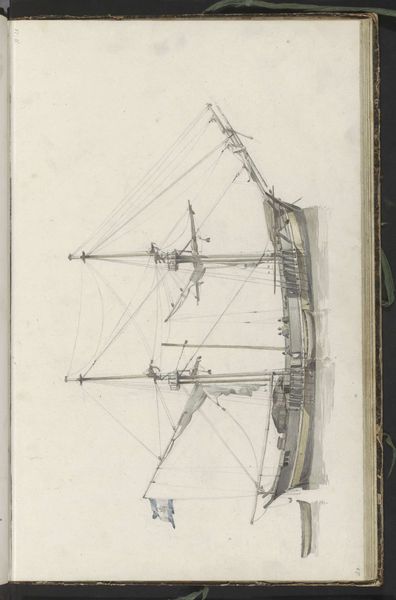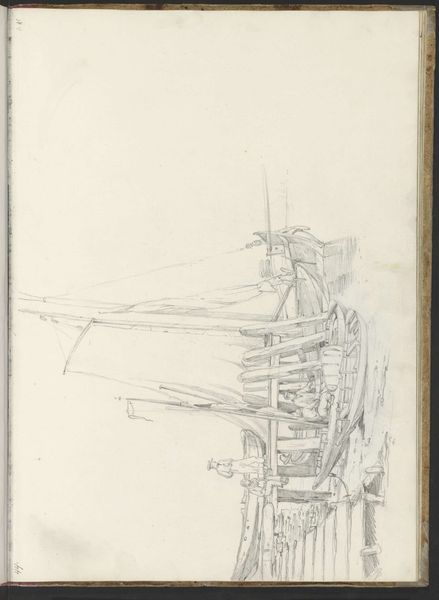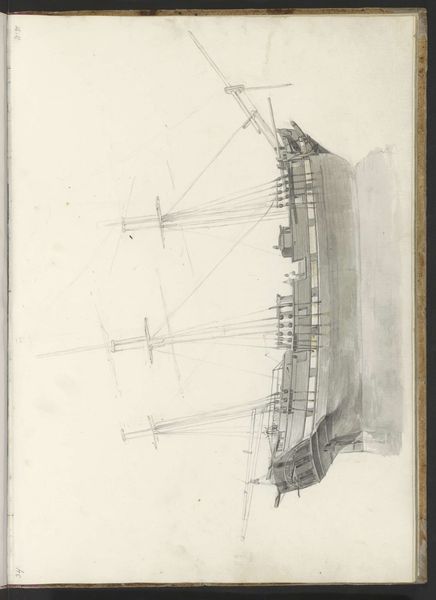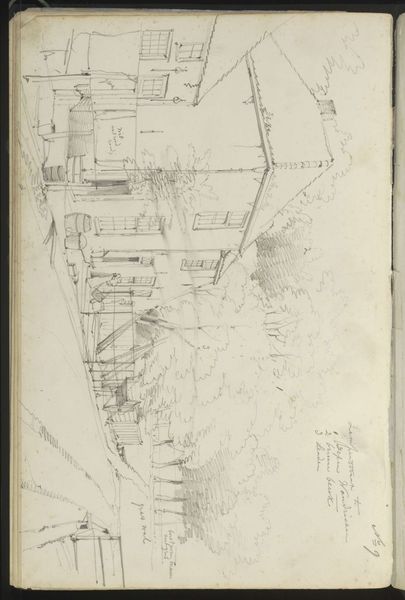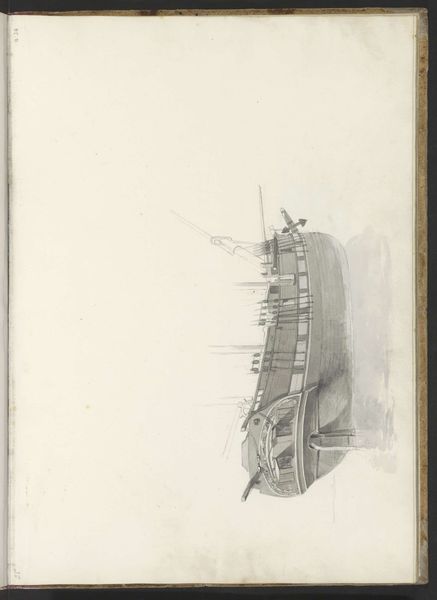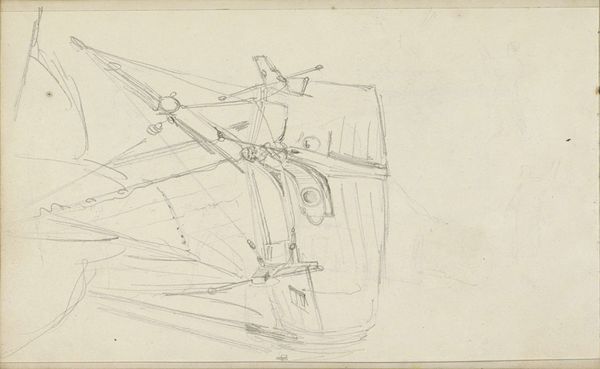
drawing, pencil
#
drawing
#
amateur sketch
#
quirky sketch
#
pen sketch
#
incomplete sketchy
#
landscape
#
personal sketchbook
#
sketchwork
#
romanticism
#
pen-ink sketch
#
pencil
#
sketchbook drawing
#
sketchbook art
#
realism
#
initial sketch
Copyright: Rijks Museum: Open Domain
Curator: This sketch, entitled "Man op een zeilschip," which translates to "Man on a sailing ship," is attributed to Johannes Christiaan Schotel. The Rijksmuseum places its creation sometime between 1797 and 1838. What strikes you first? Editor: Its unfinished quality creates an intimacy. The pale pencil lines, visible sketchbook page—it’s as if we're looking over the artist's shoulder as he captures this vessel. There's a distinct vulnerability. Curator: Precisely. The sparseness forces the eye to engage with the linework itself. Notice the careful articulation of the ship's structure, the precise angles forming its skeletal frame. The minimal shading draws attention to pure form. Editor: While admiring that attention to form, I also see a representation of labour and transit from this time period. Sailing was key for global trade. Who was on board that ship? Whose labour sustained its voyage? We see one figure on board; I wonder about his identity within the vast machinery of seafaring during the rise of colonialism and transatlantic exchange. Curator: An important perspective! And while the solitary figure gives a human element to the piece, consider how that figure also impacts the compositional weight. The artist deftly uses the contrast between open space and detailed rigging. Editor: I find myself pondering the implied narrative, considering the politics inherent in seafaring history. Ships and sailors— they both symbolize both adventure and exploitation. Curator: The lack of color focuses the eye on the pure mechanics of representation. There's an elegance to the sketch that stems from the absence of superfluous detail. Editor: Absolutely. Though, let's acknowledge that perceived “elegance” can obscure the very real history of labor, displacement, and environmental impact intrinsically linked to ships and oceanic travel. I want to stay grounded in social consciousness while we also value artistry. Curator: A vital point to consider in any art-historical engagement. Schotel’s sketch invites us to examine the many layers of historical record, while attending to its formal properties. Editor: A beautiful demonstration of the interwoven nature of looking—at both line and life—in art!
Comments
No comments
Be the first to comment and join the conversation on the ultimate creative platform.
